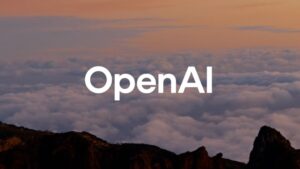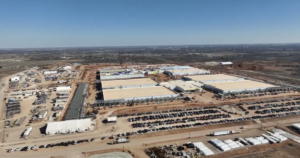Deep Research at OpenAI Requires Increased Hardware Resources

The Rising Discussion Surrounding Deep Seek and Nvidia
Recently, the conversation around the impact of Deep Seek on Nvidia has gained significant attention. During a recent segment on CNBC’s “Fast Money,” an investor suggested that the emergence of Deep Seek’s technology might render Nvidia’s H100 GPU obsolete. This claim raised my eyebrows, particularly in light of Nvidia CEO Jensen Huang’s assertion that future inference tasks will demand up to 100 times more computing power, which could negate any reductions brought about by new training systems. The landscape of AI is shifting towards inference, making it a critical area of focus for stakeholders in the technology sector.
Exploring the New Research Tool: ChatGPT’s Deep Research
To better understand the intricacies of this topic, I decided to utilize ChatGPT’s Deep Research tool. I aimed to explore the controversy surrounding Deep Seek’s influence on Nvidia and other semiconductor manufacturers. My initial question focused on the implications of leveraging Deep Seek’s technology versus the traditional computing needs highlighted by Huang.
Formulating the Research Inquiry
Here is the inquiry I posed to ChatGPT: “Can you provide a research report addressing the controversy surrounding Deep Seek and its potential impact on Nvidia, particularly in light of claims that ‘nobody needs an H100 anymore’? Moreover, how does Huang’s prediction regarding compute power for inference compare to this view?” I asked for insights into outdoor market disruptions over a 1–3 year timeframe, keeping the discussion primarily centered on Nvidia but also considering AMD and cloud-service ASICs.
ChatGPT’s Impressive Output
After reviewing 42 sources and taking a mere six minutes, ChatGPT generated an extensive and insightful report. The detailed document spanned 13 pages and 4,720 words, which I have made available on my website. This tool significantly outperformed my initial expectations.
Cost Considerations
The experiment utilized an 8 GPU cluster, which is standard for ChatGPT’s operations. The cost of running this query was approximately $2, showcasing how advanced AI research capabilities come with financial implications. In contrast, a typical ChatGPT response is estimated to cost just about $0.01, confirming that more complex tasks naturally entail higher costs.
Evaluating the Impact of Deep Seek
Critics, including the CNBC commentator, might underestimate the importance of Deep Seek’s innovations. While the exact GPU requirements for creating models like V3 are debated, it is clear that Deep Seek’s contributions will lower the costs associated with training and inference. Companies like TuanChe Limited, Microsoft Azure, and Perplexity have already begun adopting Deep Seek’s technology.
Compute Power: The Balancing Act
Despite the lower costs, we must consider Huang’s assertion about the rising need for computational power as inference models become more complex. It is likely that, overall, the need for compute cycles will increase significantly over the next few years. This shift impacts whether the ease of training provided by new technologies can offset the newfound demands of enhanced inference processes.
Insights from ChatGPT’s Report
The report generated by ChatGPT featured valuable sections, including:
- Comparative analysis of training vs. inference and their differing compute requirements.
- The transition towards inference as a day-to-day necessity for AI services.
- The implications of claims like “nobody needs an H100 anymore”.
- A discussion of Nvidia’s Blackwell generation and its significance.
- Insights into the cloud providers’ ASICs, noting the internal hardware developments by Google and Amazon.
- Projection of inference growth and its financial implications.
Maintaining Objectivity
The report’s content was well-researched, insightful, and devoid of any inaccuracies. This effectiveness in research highlights the capabilities of AI in transforming how we analyze complex industry matters. It’s a reminder that models pushing for enhanced inference are driving a significant uptick in computational needs, reshaping the AI landscape and market dynamics over the coming years.






